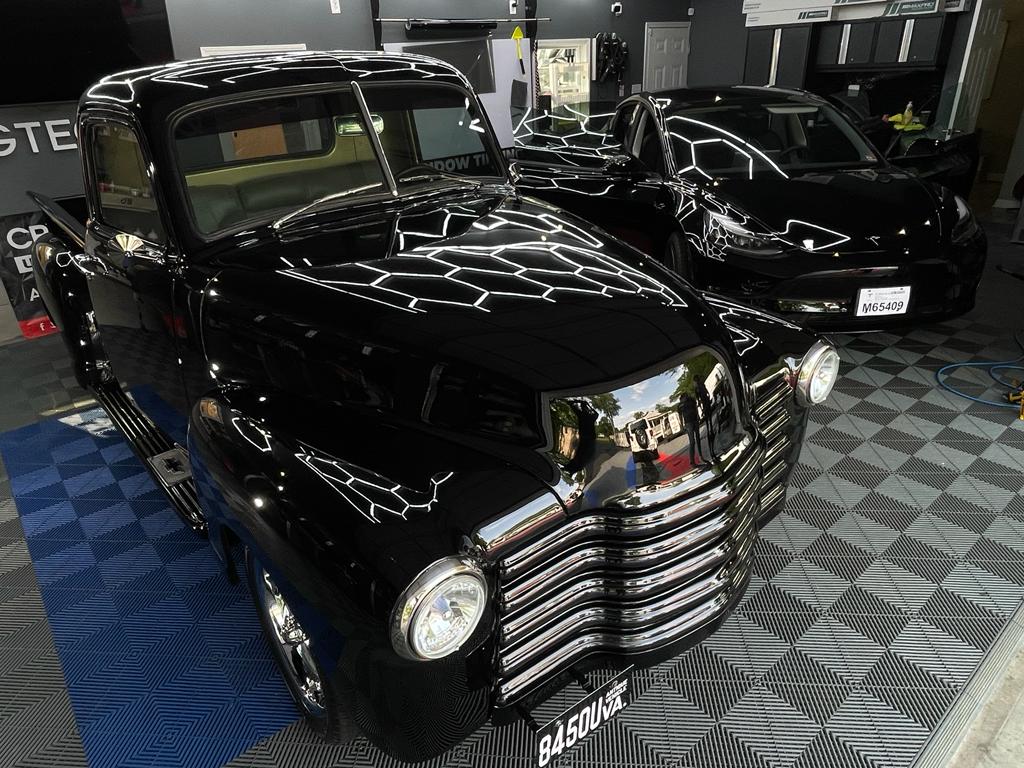Outline:
- Introduction
- What is Ceramic Coating?
- How Does Ceramic Coating Work?
- 3.1 Bonding Process
- 3.2 Hydrophobic Properties
- 3.3 Thermal Resistance
- Benefits of Ceramic Coating
- 4.1 Enhanced Paint Protection
- 4.2 UV Ray Protection
- 4.3 Scratch and Chemical Resistance
- 4.4 Easy Maintenance
- Application Process of Ceramic Coating
- 5.1 Surface Preparation
- 5.2 Ceramic Coating Application
- 5.3 Curing and Bonding
- Longevity and Durability of Ceramic Coating
- Misconceptions and Limitations of Ceramic Coating
- 7.1 Complete Elimination of Scratches
- 7.2 Replacement for Regular Maintenance
- Conclusion
- FAQs
Your Ceramic Coated Car: The Science Behind Ceramic Coating
Introduction
When it comes to protecting your car’s paint and maintaining its shine, ceramic coating has gained immense popularity. This advanced protective coating is revolutionizing the automotive industry by providing a long-lasting shield against environmental contaminants and preserving the beauty of your vehicle. In this article, we will delve into the science behind ceramic coating and explore how it enhances the appearance and durability of your car.
What is Ceramic Coating?
Ceramic coating, also known as nano-ceramic coating or glass coating, is a liquid polymer that chemically bonds with the car’s factory paint, creating a protective layer. This coating is composed of nanoparticles, such as silica dioxide or titanium dioxide, suspended in a clear resin. It forms a strong molecular bond with the paint surface, ensuring long-lasting protection.
How Does Ceramic Coating Work?
3.1 Bonding Process
The key to the effectiveness of ceramic coating lies in its bonding process. The nanoparticles present in the coating form a chemical bond with the paint molecules, creating a semi-permanent protective layer. This bond is much stronger than traditional wax or sealants, offering superior durability and longevity.
3.2 Hydrophobic Properties
One of the remarkable features of ceramic coating is its hydrophobic nature. The coating creates a surface that repels water and prevents contaminants from adhering to the paint. Water beads up and rolls off the surface, carrying away dirt and grime with it. This hydrophobic effect makes washing and maintaining your car significantly easier.
3.3 Thermal Resistance
Ceramic coating also exhibits excellent thermal resistance properties. It can withstand high temperatures, protecting the paint from damage caused by exposure to extreme heat, such as UV rays from the sun. The coating acts as a barrier, preventing paint oxidation and color fading, thus preserving the original appearance of your car.
Benefits of Ceramic Coating
4.1 Enhanced Paint Protection
The primary benefit of ceramic coating is its ability to provide superior paint protection. The protective layer formed by the coating acts as a shield against environmental contaminants, such as bird droppings, acid rain, and tree sap, which can etch into the paint and cause irreversible damage. With ceramic coating, your car’s paint will remain vibrant and glossy for an extended period.
4.2 UV Ray Protection
Exposure to UV rays can cause paint oxidation and fading, leading to a dull and lackluster appearance. Ceramic coating offers effective UV ray protection by reflecting the harmful rays and preventing them from penetrating the paint surface. This helps maintain the color integrity of your car, even under intense sunlight.
4.3 Scratch and Chemical Resistance
Ceramic coating provides an additional layer of protection against scratches and chemical damage. While it doesn’t make your car completely scratch-proof, it significantly reduces the chances of minor scratches during regular use. Additionally, the coating acts as a barrier against chemical contaminants, such as harsh detergents and road salts, which can corrode the paint.
4.4 Easy Maintenance
With ceramic coating, maintaining the cleanliness of your car becomes effortless. The hydrophobic properties of the coating repel dirt and grime, making it easier to wash off. Additionally, the smooth and slick surface provided by the coating reduces the accumulation of dust and dirt, keeping your car looking cleaner for longer periods.
Application Process of Ceramic Coating
5.1 Surface Preparation
Before applying ceramic coating, thorough surface preparation is essential. The car needs to be washed and decontaminated to remove any dirt, wax, or residue. This ensures a clean and smooth surface for the coating to bond effectively.
5.2 Ceramic Coating Application
Once the surface is prepared, the ceramic coating is applied using a microfiber applicator or an appropriate applicator pad. The coating should be spread evenly in small sections to ensure complete coverage. Following the manufacturer’s instructions, the coating is then allowed to cure for a specific duration.
5.3 Curing and Bonding
During the curing process, the ceramic coating undergoes a chemical reaction that forms strong bonds with the paint surface. This bonding process creates a protective layer that enhances the longevity and effectiveness of the coating. After the recommended curing time, the excess coating is removed using a microfiber cloth, leaving behind a glossy and protected surface.
Longevity and Durability of Ceramic Coating
Ceramic coating is known for its durability. When applied correctly and maintained appropriately, it can provide protection for several years. However, the longevity of the coating depends on various factors such as environmental conditions, maintenance routine, and the quality of the product used. Regular maintenance, including gentle hand washing and periodic inspections, can extend the lifespan of the coating.
Misconceptions and Limitations of Ceramic Coating
7.1 Complete Elimination of Scratches
While ceramic coating offers significant scratch resistance, it does not guarantee complete elimination of scratches. It can protect against light scratches and swirl marks, but deeper scratches may still penetrate the coating and reach the paint surface. Therefore, it is important to exercise caution and avoid abrasive contact with the car’s surface.
7.2 Replacement for Regular Maintenance
Although ceramic coating simplifies car maintenance, it is not a substitute for regular cleaning and care. While the coating repels dirt and grime, it is still necessary to wash the car periodically to remove any accumulated contaminants. Regular maintenance, including gentle washing and proper drying techniques, will ensure the longevity of the coating and preserve its protective properties.
Conclusion
In conclusion, ceramic coating offers exceptional protection for your car’s paintwork, enhancing its longevity and appearance. With its advanced bonding process, hydrophobic properties, and resistance to scratches and chemicals, ceramic coating has become a preferred choice for car enthusiasts. By understanding the science behind ceramic coating, you can make an informed decision and provide your car with the ultimate protection it deserves.
FAQs
- Does ceramic coating make my car scratch-proof? No, ceramic coating reduces the chances of minor scratches but does not make the car scratch-proof. It provides an additional layer of protection against scratches and helps maintain the paint’s integrity.
- Can I apply ceramic coating myself? While it is possible to apply ceramic coating yourself, it is recommended to seek professional help for optimal results. Professional detailers have the expertise and experience to ensure proper application and maximize the benefits of the coating.
- How long does ceramic coating last? The longevity of ceramic coating depends on various factors, including environmental conditions and maintenance. When applied correctly and maintained properly, ceramic coating can last for several years.
- Can ceramic coating be applied to any car? Yes, ceramic coating can be applied to any car regardless of its age or type. It provides protection and enhances the appearance of both new and used vehicles.
- Is ceramic coating worth the investment? Ceramic coating is a worthwhile investment for car owners who want to protect their vehicle’s paintwork and maintain its shine. It offers long-lasting protection, reduces maintenance efforts, and enhances the resale value of the car.


